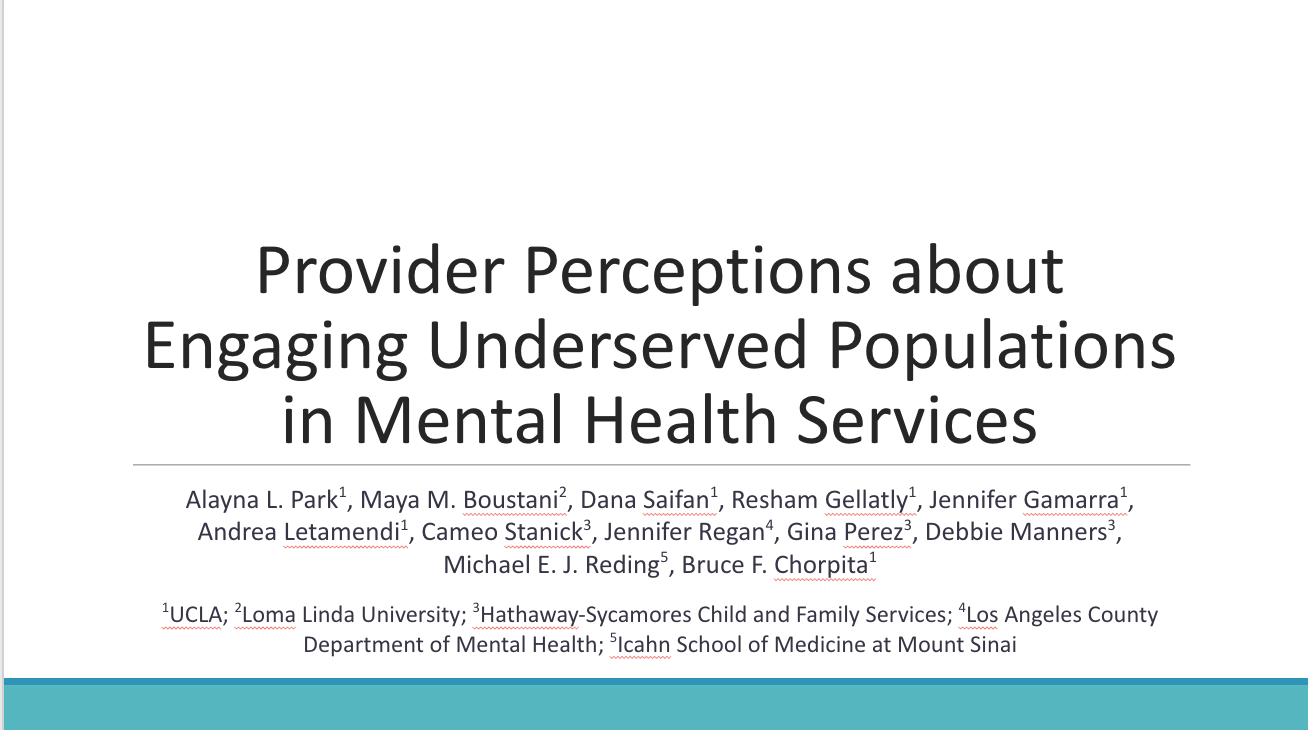Provider Recommendations for Engaging Underserved Populations in Mental Health Services

Youth and families from traditionally underserved groups are not only less likely to have access to high quality mental health services compared with the general U.S. population but are also less likely to fully participate in psychotherapy once enrolled. To maximize the benefits of psychotherapy for underserved youth and families, it is important to identify strategies for improving treatment engagement that could be feasibly adopted and sustained in routine practice. This study explored community mental health providers’ perceived solutions to engaging traditionally underserved youth and families. Providers (N=55) employed by a large community mental health and welfare agency completed semi-structured interviews that asked about facilitators to engaging underserved youth and families in community mental health services. Responses were coded using an iterative thematic analysis based on grounded theory methods that is common for mental health services qualitative research studies. Results revealed that many providers perceived supervision, training, collaboration with other treatment team members (e.g., paraprofessionals), and consultation to be helpful for engaging underserved populations. Providers offered solutions at the level of the provider (e.g., clients could be matched with providers who are fluent in the family’s preferred language; paraprofessionals could be assigned to the case), supervisor (e.g., supervisors could attend cultural competency trainings to foster multicultural supervision), agency (e.g., agencies could distribute resources related to common client concerns), and service system (e.g., service systems could encourage transformational leadership, or recruit leaders who are respected, promote a common vision, and attend to their employees’ professional development). Findings illuminate potential strategies for better engaging underserved youth and families in community mental health services. Although further research is needed to continue exploring effective solutions for mitigating mental health disparities, the current findings may serve as a useful guide for informing promising intervention directions.



